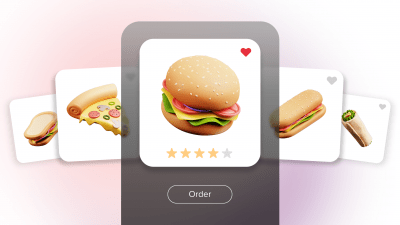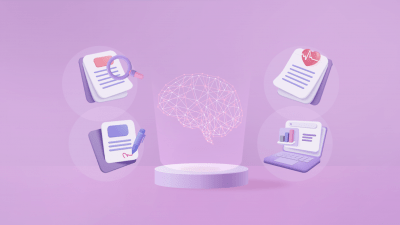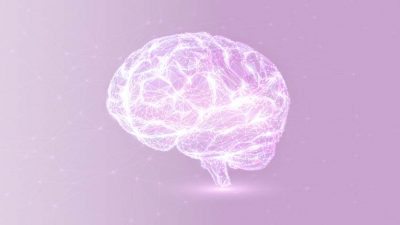Last Updated on: 13th February 2024, 12:56 pm
The programmatic ecosystem has evolved significantly in just a few years. Personalized retargeting, in particular, has driven the fastest growing segment of digital advertising. Automation can bring advertisers closer to their goals and personalized retargeting (based on Deep Learning) can boost record results.
In this article you will learn:
- the definition of programmatic advertising
- how artificial intelligence and deep learning support advanced automation
- why programmatic advertising is gaining popularity so quickly
- why you should consider switching to digital advertising automation from the current model
Table of Contents:
- What is programmatic advertising?
- Why has programmatic advertising become so widely used?
- Programmatic ad buying has become more popular than ever before
- Advertising automation & personalized creatives
- Artificial intelligence and deep learning for advanced automation in advertising
- Header bidding with ads.txt (advanced programmatic)
- Digital advertising automation is already here
What is programmatic advertising?
According to eMarketer’s US Programmatic Digital Display Advertising Outlook 2021, programmatic digital display ad spending will rise to almost $ 100 bn in 2022. After relatively small growth in 2020 (10.4%) spending is expected to grow 24.1% ($ 81.58 bn) in 2021 and 18.4% ($ 96.59 bn) in 2022.
In the advertising industry, automation has been used, for the past few decades, to deliver personalization better than humans. Machines are taking over many traditional marketing activities and thanks to artificial intelligence the process of automatization of advertising has evolved faster than ever before. Programmatic buying and selling has been one of the key areas impacted the most by these rapid enhancements in technology.
Why has programmatic advertising become so widely used?
Before programmatic, the process of digital ad-buying took place between people who had to negotiate agreements between their own criteria for ad selection or placement. The process was time consuming and often expensive without reliable results. Programmatic replaced the human factor in this process, using high speed data and algorithms to make the decisions for them. As a result, ad buying is more efficient, cheaper and faster. Machines can execute an entire process in microseconds. The end results are reliable and they can work 24/7 across the globe.
Programmatic ad buying has become more popular than ever before
Programmatic brings advertisers closer to the publishers. Today, there is no need for a middleman to negotiate deals between the two. The model also empowers marketers to have greater control over their campaigns – offering the flexibility of pricing, goal setting, and many other nuances to help them achieve specific goals.
Automation has taken programmatic even further. Technologies like AI have made it possible to analyze users on an individual basis, rather than traditional segmentation which can only predict generic groups. Instead of putting an emphasis on “where a banner is placed,” these machines optimize by caring more about “to whom the ad is shown.”
Advanced automation makes it possible to follow a target group and tailor ads to the behavior and preferences of a user in ultra-precise ways that humans simply can’t achieve. Moreover, the entire process takes milliseconds and is almost unnoticed to the user.
Auction models have many advantages, because they improve market flexibility and make prices more realistic based on supply and demand terms. The main advantages for marketers are the second-price auctions, where the winner (the one with the highest bid) pays the second highest bid and not his actual bid. This reduction gives an advantage for the higher bidders and it also gives them a chance to save money on the overestimation of the value of the ad impression. The worst that can happen in this model is to pay the bidding price, which puts the marketer in full control of the ad buying process.
This all adds up to the fact that marketers can spend their time efficiently, focusing on advanced planning and well developed campaigns. They will have time to innovate and grow their brands, rather than worry about how to analyze the data and make a decision that will influence millions of customers at a time.
Advertising automation & personalized creatives
Using automation with creatives offers the flexibility to dynamically adjust banner templates in a campaign. From the whole pool of banner resources available for the given campaign, each user will see the banner, which has the biggest click potential by this specific person. Apart from this, the algorithm tries to show ads with the highest click potential – the more effective the banner template, the more displays it gets. This is one key advantage of automatization – optimizing creative displays in real time.
In e-commerce, AI and especially Deep Learning are the perfect tools to predict user’s desires. The technology is simplifying our everyday user experience by bringing deeply targeted ads that contain not only products we are more likely to buy, but also those which we haven’t seen or products we haven’t even thought about. Personalized automation can adjust creatives on the fly to match particular customer segments that might be of interest to the marketer.
Good to know: 3 Reasons to Focus on Contextual Targeting in Advertising
Artificial intelligence and deep learning for advanced automation in advertising
Artificial Intelligence is the key difference between standard automation and advanced versions. AI allows brands to engage potential customers and markets like never before. Standard interfaces have already adapted to fit a user’s interest on a personal level, matching industry insights and behaviors with display ads. But deep learning (the most promising field of AI-based research) algorithms will unlock even more opportunity.
By using deep learning technology, it is possible to get more reliable, richer, machine-interpretable user profiling of customers’ buying potential, without any human expertise. As the first retargeter in the world to have implemented 100% of deep learning in all out technologies, RTB House has first-hand experience in making this scenario a reality.
Predicting user behaviors based on previous activities allows our retargeter to better recommend the best products to offer. With this, brands can increase CTR metrics and reach their most valuable customers with the exact same budget previously allocated. Self-learning algorithms can predict user clicks on ads more accurately, boosting the total number of clicks by 16.5% within the same budget limitations.
Conversion rate and conversion value prediction algorithms are also able to increase overall performance from retargeting activities up to 29%. Moreover, deep learning-based recommendations increase product selection efficiency by up to 41%, compared to campaigns that did not utilize the same methods. In general, according to our practice, self-learning algorithms help to achieve super-accurate recommendations that make advertising activities up to 50% more efficient.
Header bidding with ads.txt (advanced programmatic)
Finally, marketers should pay attention to header bidding. This is an advanced programmatic technique whereby publishers offer inventory to multiple ad exchanges. It is appreciated by both advertisers and publishers alike as it helps to improve the monetization of the ad surface and provides access to better inventory. The process becomes more transparent thanks to the connection with ads.txt (Authorized Digital Sellers). This is a tool which allows publishers to declare the companies authorized to sell their digital inventory, which can be very important for digital consumers. This ensures that all parties and end-users are seeing ads from secure and reliable sources.
Header bidding tends to promote first-price auctions, where the highest bid wins. There are many arguments – frankly speaking each side of the discussion has its own advantages, but in general all players wants to increase transparency of the bidding ecosystem and to make it easier to handle. Nevertheless, the future outcome won’t affect the advertisers poorly. It can even bring great results thanks to AI and deep learning algorithms. At the same time they are bidding, they are also determining the optimal rate that will allow them to achieve their desired results at the lowest cost. By processing all the bids in microseconds, working 24 hours a day, they learn very quickly how to bet the most effectively, and thus, how to win the auction and save a lot of money.
Digital advertising automation is already here
The ongoing takeover of automation in the modern world is something we all need to adapt towards. Soon, it will be a normal part of a digital advertising ecosystem, just as programmatic took over traditional digital ad methods.
When powerful algorithms are able to learn from our data, it makes it easier for marketers to understand customers. The upcoming years will focus on developing programmatic tools by making them even more efficient, but at the same time easier to run and more transparent for both buyers and publishers. One thing is certain – the advances in programmatic buying and automation are just getting started.
If you have any questions, comments or issues, or you’re interested in meeting with us, please get in touch.





